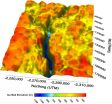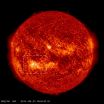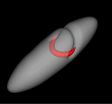(Press-News.org) Quantum entanglement refers to the "pairing" of two subatomic particles in such a way that they form a whole quantum system. Interest in entanglement is increasing today, as it challenges the foundations of quantum mechanics itself, and is also key for achieving quantum information processing and communication. Entanglement is thought to exist up to the everyday, or "macroscopic" realm – according to the predictions of quantum physics – but experimental proposals to show this often involve conditions that are difficult to achieve in today's labs. Publishing in Physical Review Letters, scientists at EPFL have put forward an experimental protocol for demonstrating QE at the macroscopic scale by using a device that can be controlled by light. Unlike others, the protocol can be carried out with relative ease, using state-of-the-art nanostructures that are already available in several laboratories worldwide. This perspective can propel our understanding of the quantum world towards unexpected directions.
"Spooky action at a distance"
Quantum entanglement is an intriguing phenomenon that occurs when elementary particles become inextricably linked in such a way that, when the a change is induced on one particle, a corresponding change happens to the other regardless of how far apart they are. The two particles behave as a whole, and this "correlation" is different from any one that classical physics can explain. Entanglement is such a bizarre phenomenon, and has such strange implications for physics, that Einstein himself called it "spooky action at a distance."
Nonetheless, entanglement between particles has been shown repeatedly in the lab today, with a Canadian firm even claiming to have built a quantum computer in 2011. But the critical question, with both fundamental and practical implications, is whether quantum entanglement can be achieved beyond the microscopic realm of elementary particles and into the everyday or "macroscopic" world. Several experiments have been proposed to run this test. Most of them however cannot be carried out as they rely on prohibitive parameters and conditions that cannot be realistically implemented in today's labs.
A feasible experiment
Vincenzo Savona and his postdoc, Hugo Flayac have now proposed a feasible, real-world experiment to demonstrate entanglement in the "macroscopic" realm. The experimental design draws from his recent research in the field of optomechanics, which Savona describes as "the art of conceiving systems in which light interacts, in highly controlled and highly tailored way, with a mechanical vibration of some sort." This mechanical vibration can be thought of as a musical note from a tuning fork, but in optomechanics it involves tiny devices specifically designed for this purpose.
"The experiment begins with a single photon, which is in a quantum superposition of two states", says Savona. "This is not entangled yet, because entanglement per definition must imply at least two objects, and here we have only one photon. An optomechanical system acts in such a way that, whatever the state of the photon, it is transferred to the state of a mechanical vibration." In the case when the photon is in a quantum superposition then, its state is converted into a pair of entangled mechanical vibrations ("notes") at different frequencies.
"This represents entanglement," says Savona, "because each 'note' is made up of the collective vibration of billions of atoms, hence there is not one particle, but rather billions of them. This is ultimately what I call 'macroscopic entanglement'."
The protocol is designed in such a way that, once vibrations are converted back into light, the latter shows a peculiar interference pattern that reflects the presence of entanglement. "Under specific conditions, interference, together with the fact that the system contained no more than one quantum (e.g. a photon) show that entanglement actually took place. In our protocol, the readout phase does exactly this: it checks that only one quantum was present inside the system. This check, plus the occurrence of the interference, is the evidence that entanglement was present."
The optomechanical device used in this experiment is called a "photonic crystal nanocavity" (PCN). It is basically a nano-device designed in such a way that it can trap and hold incoming light for a certain amount of time, while vibrating at two different resonant frequencies. Savona's quantum entanglement experiment uses a PCN that his team developed and tested earlier this year. This particular kind of PCN has been shown, by another EPFL scientist, Tobias Kippenberg, to produce mechanical vibrations of different frequencies when it interacts with light. "This was the ideal playground for an entanglement experiment," says Savona. "Combined with the ability of this PCN to hold light for a particularly long time, it formed the basis of our experimental proposal."
The experiment requires an extremely low temperature (0.004 K or -273.146oC), which is nonetheless commonly feasible– once again thanks to lasers – in optomechanical devices. But the experimental design is unique because it proposes light as a means for connecting quantum entanglement to the macroscopic realm.
It is also special because of its focus on what can practically be done in labs today. "Our approach was essentially the opposite of other experimental proposals," says Savona. "We said, 'let's see what physical systems we have available, which have already been fabricated and tested; let's start with the physical properties of those systems and see if we can devise a way to produce an entangled state of mechanical modes'." Savona's team is now looking forward to carrying out the experiment in collaboration with other groups.
INFORMATION:
Reference
Flayac H, Savona V. Heralded Preparation and Readout of Entangled Phonons in a Photonic Crystal Cavity. Physical Review Letters 30 September 2014.
Entanglement made tangible
2014-09-30
ELSE PRESS RELEASES FROM THIS DATE:
Shape up quickly -- applies to fish, too!
2014-09-30
Fish can live in almost any aquatic environment on Earth, but when the climate changes and temperatures go up many species are pushed to the limit. The amount of time needed to adjust to new conditions could prove critical for how different species cope in the future, reveals a new study from researchers at the University of Gothenburg, published in the scientific journal Proceedings of the Royal Society B.
Climate change continues apace thanks to increasing levels of greenhouse gases in the atmosphere. The greenhouse effect has led not only to an increase in average ...
Dietary polyunsaturated fatty acids linked to smaller risk of coronary heart disease
2014-09-30
A recent study completed at the University of Eastern Finland shows that dietary polyunsaturated fatty acids may reduce the risk of coronary heart disease. The sources of polyunsaturated fatty acids include fish, vegetable oils, and nuts. The findings were published in Arteriosclerosis, Thrombosis & Vascular Biology, an esteemed journal of the American Heart Association.
Recent studies have not found an association between the consumption of saturated fats and the risk of cardiovascular diseases. It seems that the mere reduction of saturated fats from the diet does not ...
On the trail of the truffle flavor
2014-09-30
This news release is available in German. FRANKFURT. Truffles, along with caviar, are among the most expensive foods in the world. Because they grow underground, people use trained dogs or pigs to find them. But the distinctive smell of truffles is not only of interest to gourmets. A group of German and French scientists under the direction of the Goethe University Frankfurt have discovered that the smell of white truffles is largely produced by soil bacteria which are trapped inside truffle fruiting bodies.
White truffles from the Piedmont region in Italy can reach ...
NASA ocean data shows 'climate dance' of plankton
2014-09-30
The greens and blues of the ocean color from NASA satellite data have provided new insights into how climate and ecosystem processes affect the growth cycles of phytoplankton—microscopic aquatic plants important for fish populations and Earth's carbon cycle.
At the bottom of the ocean's food chain, phytoplankton account for roughly half of the net photosynthesis on Earth. Their photosynthesis consumes carbon dioxide and plays a key role in transferring carbon from the atmosphere to the ocean. Unlike the plant ecosystems on land, the amount of phytoplankton in the ocean ...
NASA support key to glacier mapping efforts
2014-09-30
Thanks in part to support from NASA and the National Science Foundation, scientists have produced the first-ever detailed maps of bedrock beneath glaciers in Greenland and Antarctica. This new data will help researchers better project future changes to glaciers and ice sheets, and ultimately, sea level.
Researchers at the Center for Remote Sensing of Ice Sheets, or CReSIS, at the University of Kansas in Lawrence, Kansas, recently built detailed maps of the terrain beneath Greenland's Jakobshavn Glacier and Byrd Glacier in Antarctica. The results of this study were published ...
NASA-funded rocket has 6 minutes to study solar heating
2014-09-30
On Sept. 30, 2014, a sounding rocket will fly up into the sky – past Earth's atmosphere that obscures certain wavelengths of light from the sun -- for a 15-minute journey to study what heats up the sun's atmosphere. This is the fourth flight for the Very high Angular Resolution Ultraviolet Telescope, or VAULT, will launch from the White Sands Missile Range near Las Cruces, New Mexico.
The instrument, now called VAULT2.0, has been refurbished with new electronics and an imaging detector to capture images more frequently than before. While in space, VAULT2.0 will observe ...
Deceptive-looking vortex line in superfluid led to twice-mistaken identity
2014-09-30
So long, solitons: University of Chicago physicists have shown that a group of scientists were incorrect when they concluded that a mysterious effect found in superfluids indicated the presence of solitons—exotic, solitary waves. Instead, they explain, the result was due to more pedestrian, whirlpool-like structures in the fluid. They published their explanation in the Sept. 19 issue of Physical Review Letters.
The debate began in July 2013, when a group of scientists from the Massachusetts Institute of Technology published results in Nature showing a long-lived structure ...
New discovery approach accelerates identification of potential cancer treatments
2014-09-30
ANN ARBOR—Researchers at the University of Michigan have described a new approach to discovering potential cancer treatments that requires a fraction of the time needed for more traditional methods.
They used the platform to identify a novel antibody that is undergoing further investigation as a potential treatment for breast, ovarian and other cancers.
In research published online in the Proceedings of the National Academy of Sciences, researchers in the lab of Stephen Weiss at the U-M Life Sciences Institute detail an approach that replicates the native environment ...
Gene doubling shapes the world: Instant speciation, biodiversity, and the root of our existence
2014-09-30
What do seedless watermelon, salmon, and strawberries all have in common? Unlike most eukaryotic multicellular organisms that have two sets of chromosomes and are diploid, these organisms are all polyploid, meaning they have three or more sets of chromosomes—seedless watermelon and salmon have 3 and 4 sets of chromosomes, respectively, and strawberries have 10! While this might seem surprising, in fact most plant species are polyploid. Polyploidy, or genome doubling, was first discovered over a century ago, but only recently, with the development of molecular tools, has ...
Smithsonian scientists discover coral's best defender against an army of sea stars
2014-09-30
Coral reefs face a suite of perilous threats in today's ocean. From overfishing and pollution to coastal development and climate change, fragile coral ecosystems are disappearing at unprecedented rates around the world. Despite this trend, some species of corals surrounding the island of Moorea in French Polynesia have a natural protector in their tropical environment: coral guard-crabs. New research from the National Museum of Natural History's Smithsonian Marine Station scientist Seabird McKeon and the museum's predoctoral fellow Jenna Moore of the Florida Museum of Natural ...





